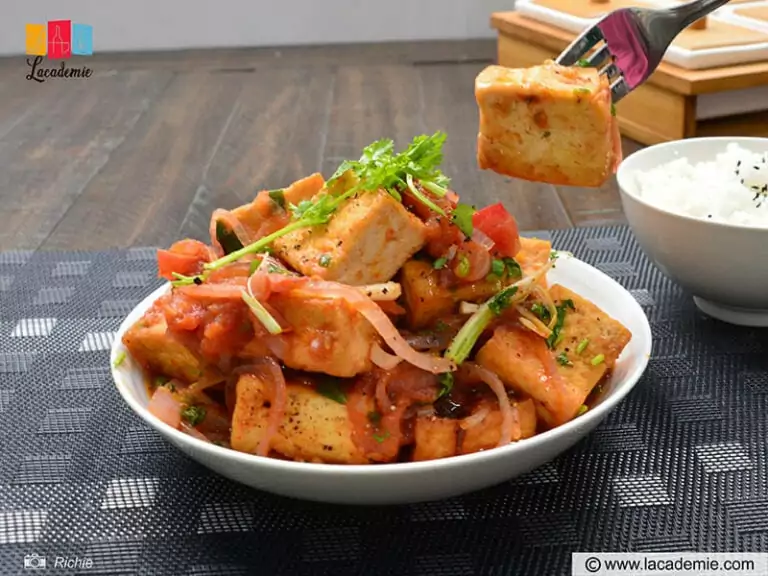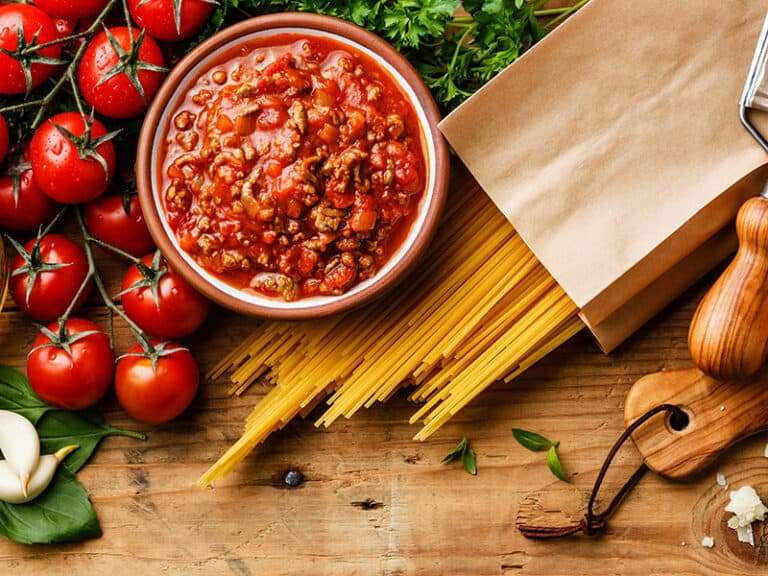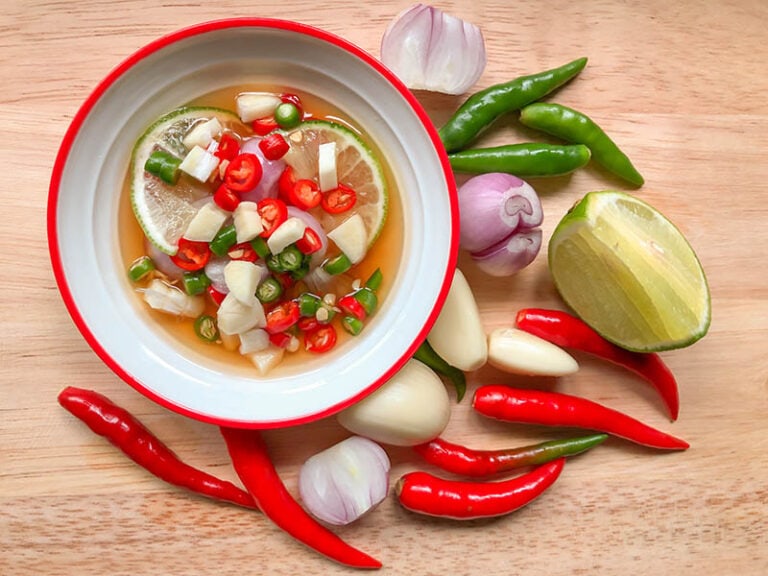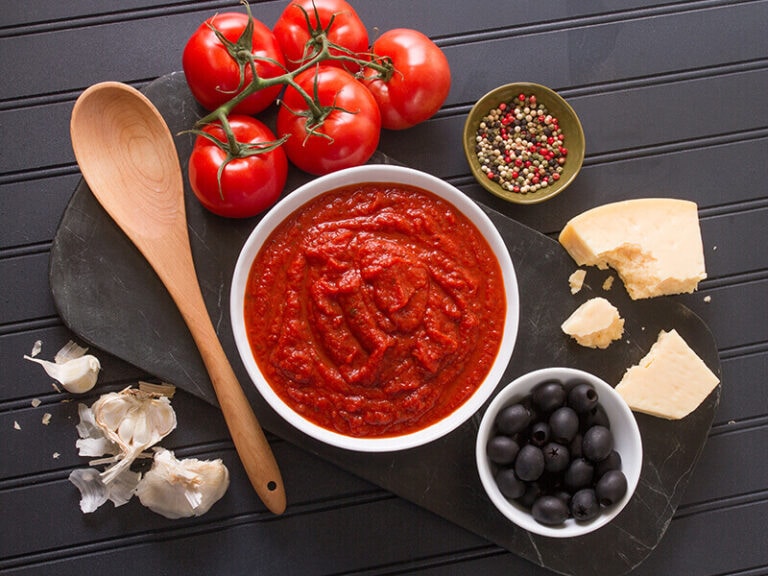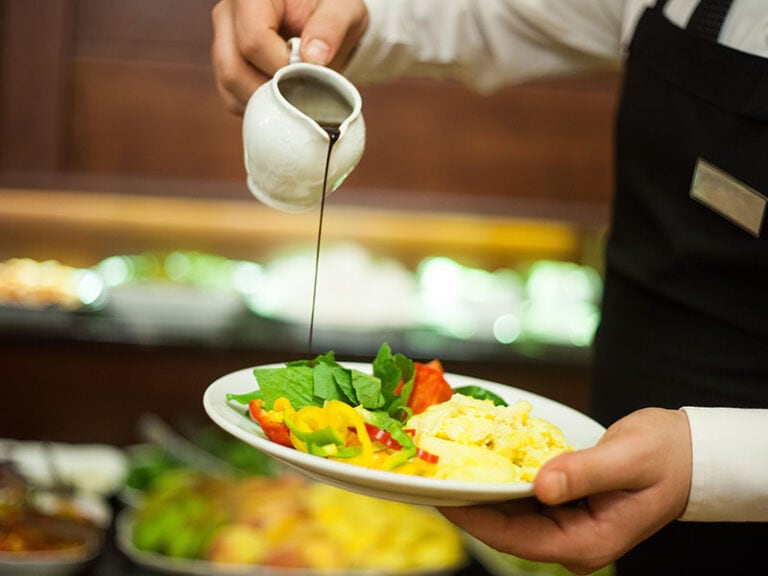You’re going to throw the leftover marinade, but your children watch and curiously ask: “Can you use marinade as sauce?”.
Well, children love asking lots of questions about their surroundings. And it is a good thing. As a habit, you’re going to explain to your little ones. But just before any words come out of your mouth, you pause for a moment. “Can I use my marinade as a sauce?” You have no idea!
There is no need to feel shame. Many are confused about this question, too. Sit back and stay with me as I will go into a detailed explanation about this matter.
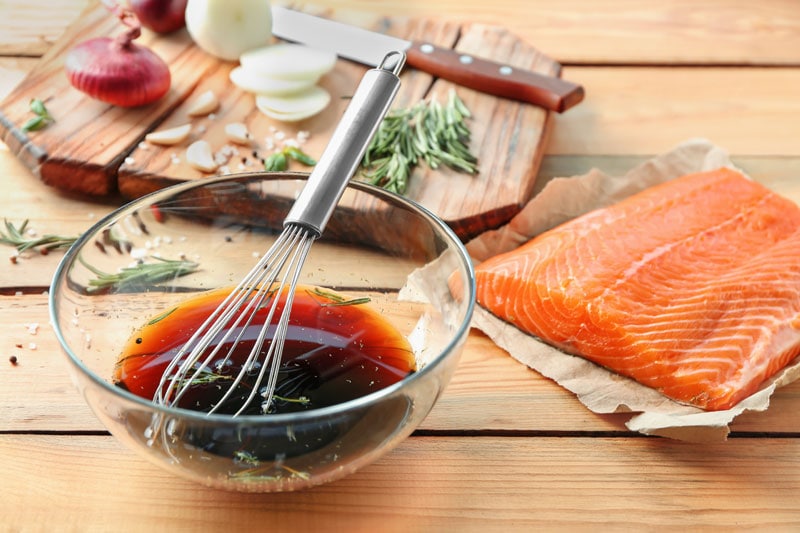
Marinade Vs. Sauce: What Are The Differences?
Before diving deeper into the early question, let’s see how a marinade and a sauce are classified.
What Is A Marinade?
A marinade is a liquid mixture that often includes oil, vinegar, herbs, and spices. Marinades are divided into 4 different types: acidic, enzyme, dairy, and oil-based.
- Acidic marinades are marinades that have acids, including wine, vinegar, tomato juice, or citrus juice. These acids help juices soak into the meat by loosening the protein bonds.
- Enzyme marinades use enzymes in certain fruits, such as kiwi, papaya, mango, or pineapple, to make the meat tender by breaking down the muscle fibers. However, if you marinate the meat too long, it may become a mushy mess.
- Dairy marinades use mild acids, like buttermilk or yogurt, as their base. The calcium in dairy helps activate enzymes in the meat, which in turn makes it tender.
- Oil-based marinades are the most common in cooking. They are made from oil (olive oil and sesame oil) and other ingredients, usually herbs and spices.
To use a marinade, you need to pour it on your food (meat, chicken, or seafood) before cooking. This makes it softer and more flavorful by breaking down the muscle fibers.
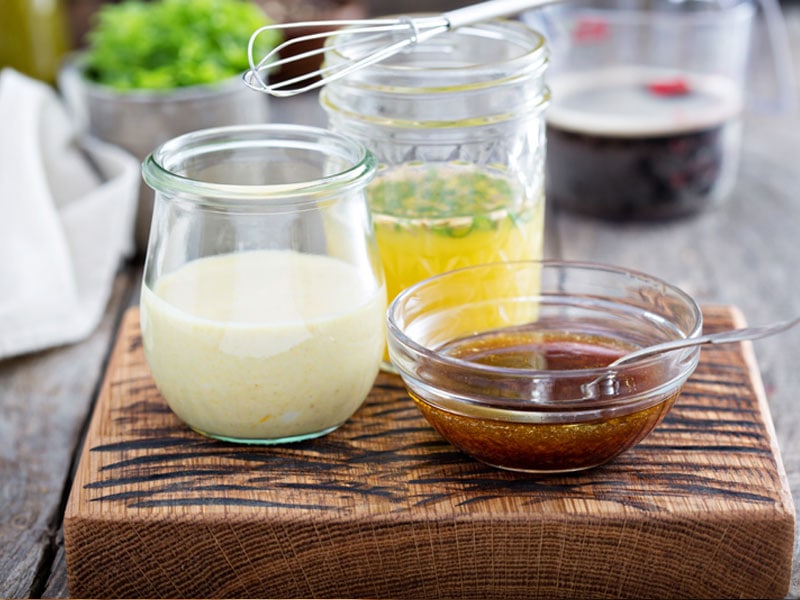
What Is A Sauce?
A sauce, on the other hand, is a thick liquid made with a thickening agent, flavorings, and seasonings. You do not consume a sauce alone but with other meals. Below are some day-to-day sauces for cooking purposes:
- Soy sauce was first used by the ancient Chinese over 2500 years ago. Besides main ingredients, such as soybeans, roasted grain, water, and salt, people often add some alcohol to keep it last longer.
- Teriyaki sauce is another sauce that originated from Asia (Japan). It is a mix of soy sauce and additional ingredients, like mirin (Japanese rice wine), sugar, and sake. This sweet and spicy sauce is often used in meat, fish, and vegetables.
- BBQ sauce is divided into 4 major kinds: tomato-based, vinegar-based, mayonnaise-based, and mustard-based sauces. While its common use is for barbecuing, this sauce also works well in grilling recipes.
- Worcestershire sauce (also known as Worcester sauce) is made from vinegar, anchovies, molasses, tamarind, and other ingredients. Hailing from England, it is often used in meat, fish, and vegetables due to its savory, sweet, and tangy flavors.
Each culture also has its unique varieties of sauces. A famous example of this is the 5 French mother sauces introduced in the 1800s, including béchamel, velouté, Espagnole, Hollandaise, and tomato. Due to their versatility, they have been the foundation for various sauces later.
A sauce is used for a large number of dishes, whether they are meat- or vegetable-based ones. Besides improving the taste, it also provides moisture to food and makes it more appealing in texture and color.
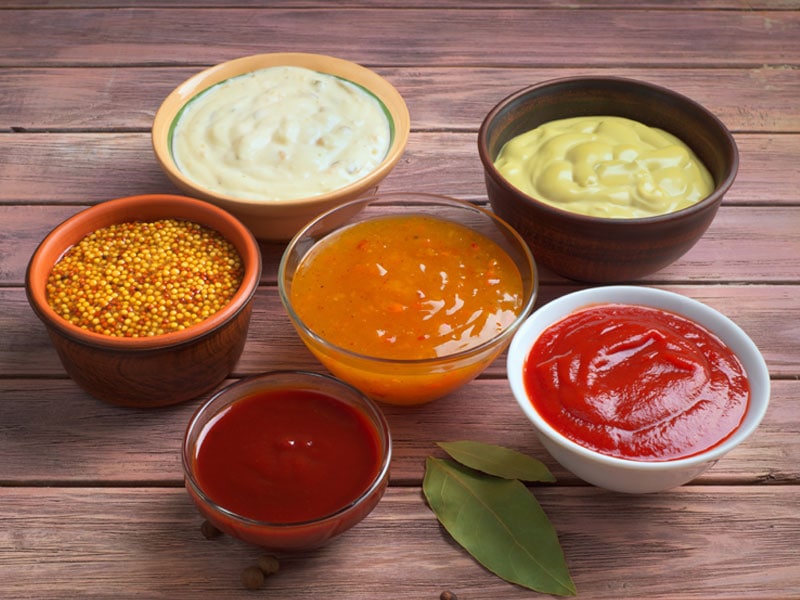
Differences Between A Marinade And A Sauce
Despite sharing a couple of similarities, a marinade and sauce do have some differences. For a quick glance, look at the table below.
Ingredients And Consistency
While both marinade and sauce contain some flavorings or seasonings, the difference here is their key ingredients. The core of a marinade is acids, such as vinegar, while a thickening agent is a base in a sauce.
Another difference is that a marinade is a runny liquid, whereas a sauce can come in a variety of consistency, be it liquid, semi-liquid, runny, or thick.
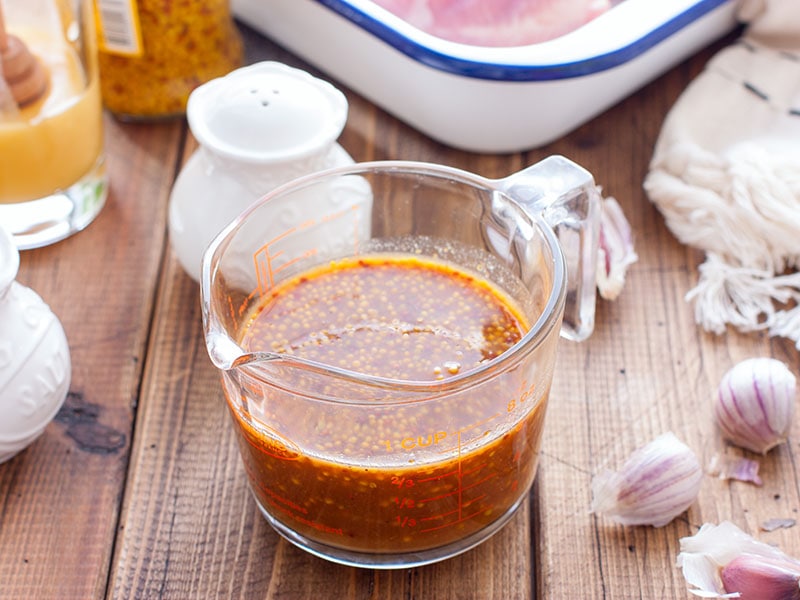
Preparation And Cooking
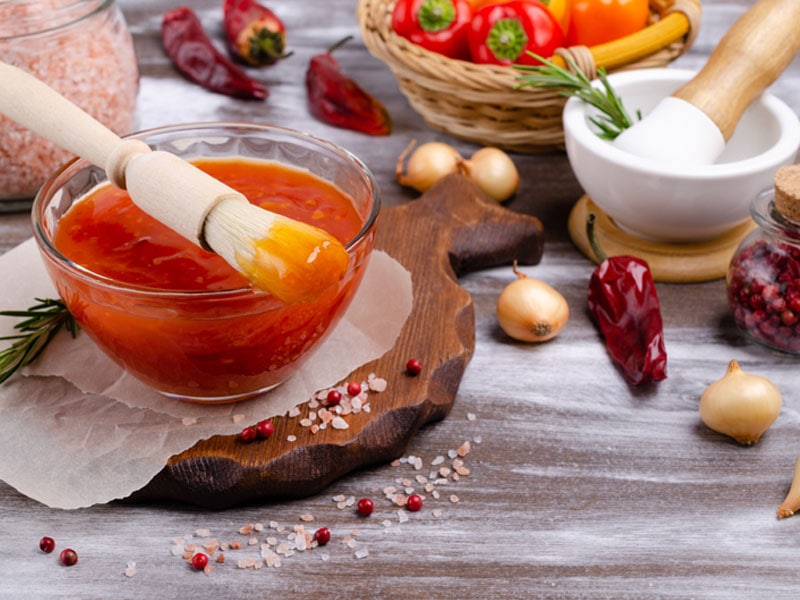
The process of making a marinade is quite simple. All you need is to blend all ingredients at the same time. But to create a sauce, you will need more steps and time. You have to mix your ingredients in certain orders and at various stages to create the desired sauce.
They also differ in terms of cooking principles. A sauce often needs to go through the cooking process to be usable, whereas it is not necessary for making a marinade.
Here is a step-by-step guide to making a quick, easy, and flavorful marinade for your steak.
Uses And When To Apply
Both liquids are used for adding flavors to food to satisfy your taste. But they differ from each other in terms of purposes and how to use.
To use a marinade, you need to pour it on your meat or fish before cooking. The ideal time for doing this is a day before. This helps your marinade have enough time to soak into your food to ensure its flavors. Its acids also make your meat or fish softer to cut and consume.
A sauce, on the other hand, can be added at any time, either during or after cooking. There is no need to leave your food with a sauce for hours or days. Using a sauce helps your food maintain its moisture and makes it more attractive to eat.
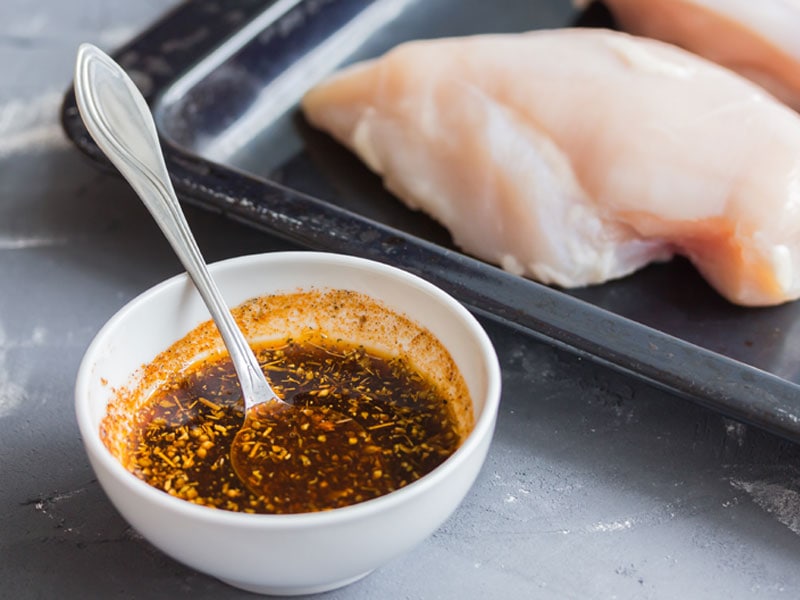
Shelf Life And Storage Conditions
For a homemade marinade and sauce, well, it is impossible to tell their exact shelf life. They may last for 3-5 days in a fridge, depending on various factors, such as the ingredients and storage condition (an airtight container is the best option).
In the case of a bottled marinade, the shelf life is much longer. You can also keep an unopened bottle in a dark, cool place rather than the fridge as long as you pay attention to its “best by” day.
However, after opening the bottle, you should use it within 2 months as well as always refrigerate the marinade.
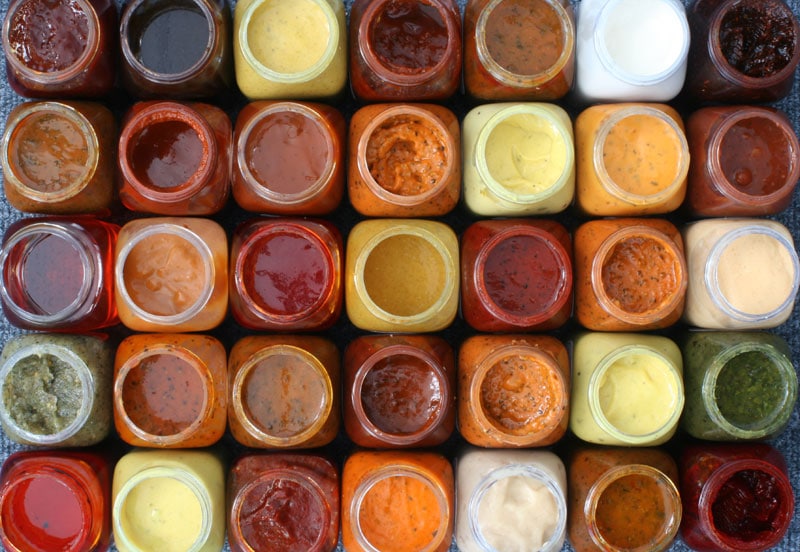
Can You Use A Marinade As A Sauce?
Now to the big question: can you use a marinade as a sauce? “No way! Absolutely not!” you may think. But the truth is that it is possible to use it as a sauce. Of course, there are a few things to consider first.
If you are talking about the marinade that you applied to the raw meat and fish, then consuming it as a sauce without cooking is not a good idea. This is because your marinade has already been contaminated by bacteria found in the meat and fish.
While a marinade often comes with acids, like vinegar, their minimal amounts and levels are not powerful enough to kill the foodborne germs. The longer you leave your marinade with the meat, the worse it is. Using such contaminated marinade is likely to lead to several health problems.
Therefore, a used marinade has to be processed to be edible. So, how about a new marinade that hasn’t been used? Because it has not been in contact with any raw meat or fish, this means it is quite safe to consume.
But there is still an issue: its consistency. As mentioned before, a marinade has a runny consistency, whereas a sauce may be semi-liquid or thicker. Their base ingredients may also not be appealing to use as a sauce.
This means using a non-used marinade as a sauce is possible, but it may not bring about the sense of a real sauce. Again, you still have to process it to create a passable sauce.
When it comes to bottled marinades, you can totally use them as sauces. In most cases, marinades in bottles are often cooked before being sold on the market. However, they still have the same texture as the non-used variety.
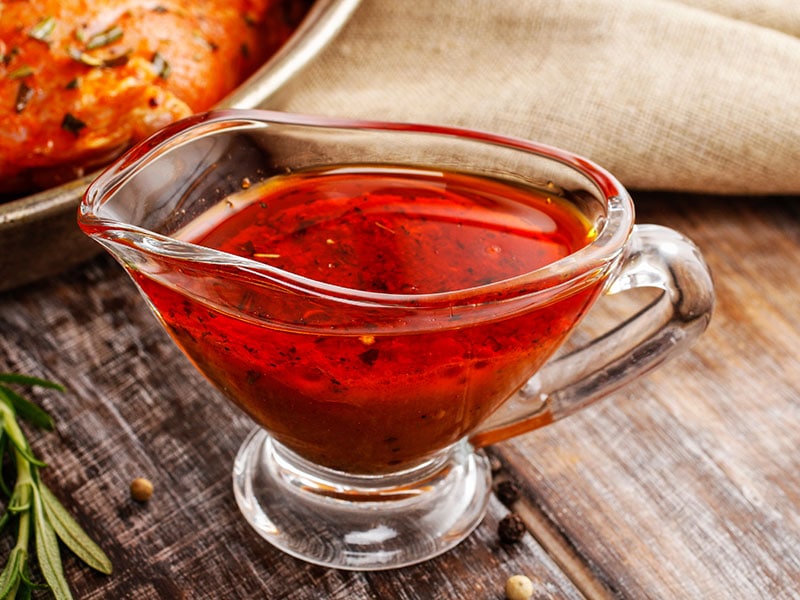
How To Use A Marinade As A Sauce
Now, what should you do to use a marinade as a sauce? Here are some of the best ways to go.
Turning A Marinade Into A Sauce
Reusing a marinade on raw meat or fish as a sauce can cause food poisoning. To avoid that problem, you need to boil a meat marinade to kill the foodborne germs before using it (1).
This method applies to both meat and non-meat marinades (including bottled marinades). The only difference is the temperature required for each type.
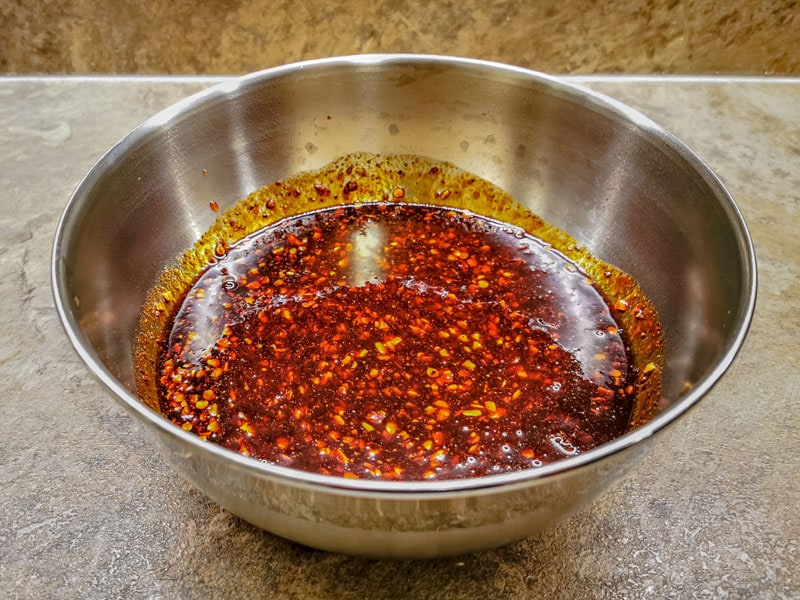
Step 1: Boiling Your Marinade
For meat marinade: Pour a marinade that you applied to raw meat or fish into a pot or saucepan. Turn the heat on and cook it until it reaches above 165°F (74°C) (2). Make sure that you stay at the right temperature for several minutes to kill the bacteria (3).
For non-meat marinade: Pour a marinade into a pot or saucepan and turn the heat on to cook it. Boiling is a necessary step to allow your marinade to have desired consistency and flavors later.
If your marinade was used for vegetables, you don’t have to worry much about cross-contamination. However, vegetables sometimes include Salmonella, E.coli, and Listeria (4). To guarantee safety, you can cook it in the same way with meat marinade.
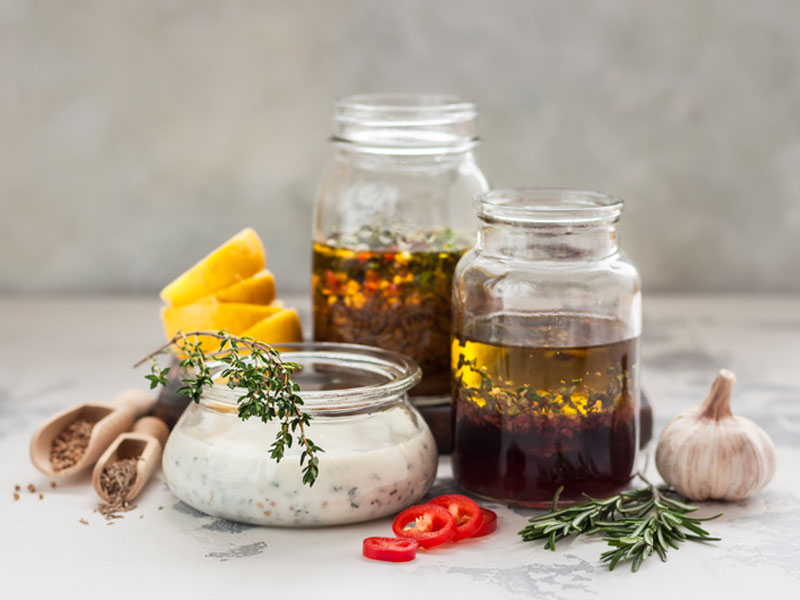
Step 2: Adjusting The Consistency
As the liquid evaporates, the marinade will start to thicken. You can also add some liquids to it and adjust the heat to reduce the thickness of your marinade. Be careful if the marinade contains sugar: it will get burned when cooked too long at high temperatures.
If you wish to reduce the acid intensity, add ¼ teaspoon of baking soda to your marinade before cooking. This may help the marinade be more appealing to use as a sauce.
Step 3: Adding Ingredients
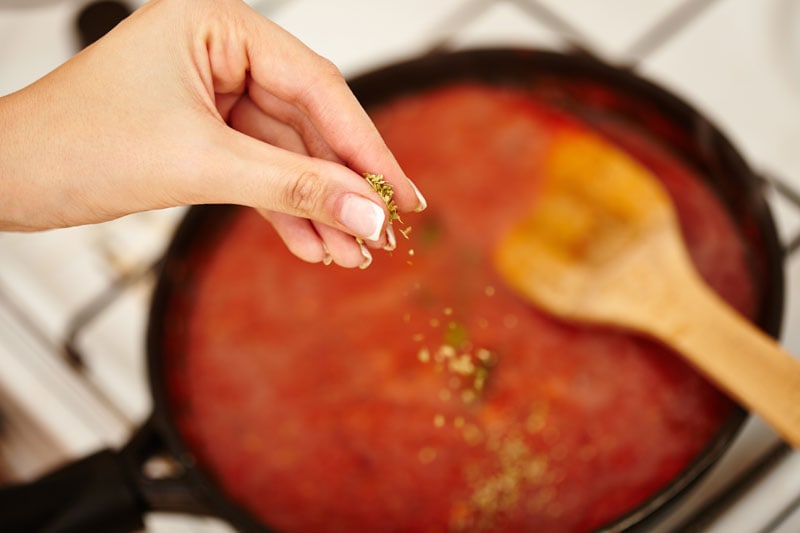
Add any ingredients, such as spices, seasonings, and herbs, into your marinade to satisfy your preference. Turn the heat down a little bit to avoid some of your ingredients being burnt. You may also remove any original ingredients in your marinade that are not suitable for a sauce.
Step 4: Tasting Your Marinade
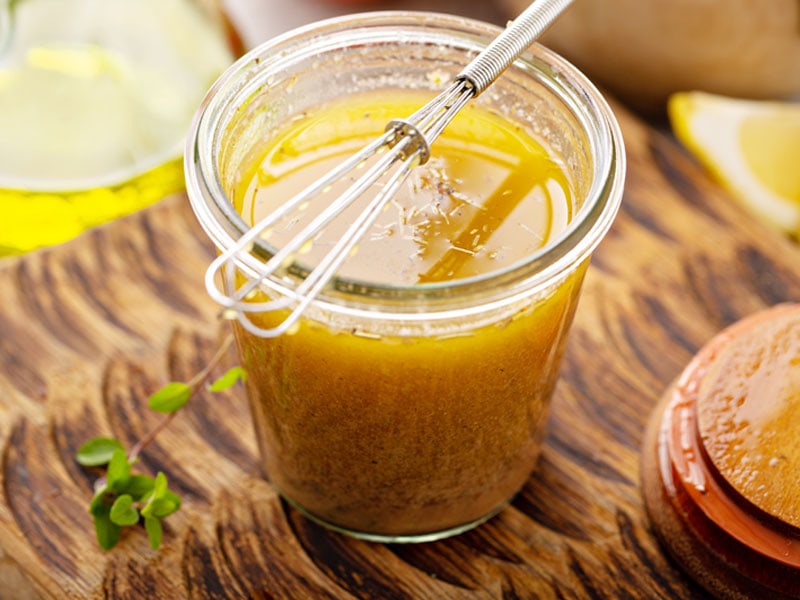
Taste your marinade to ensure its flavor meets your expectations. If the taste of the marinade has not been developed fully, repeat the last two steps. Thus, turn the heat off, pour the contents into your bowl and let it cool. It’s now safe and flavorful enough to use as a sauce.
Combining With Another Sauce
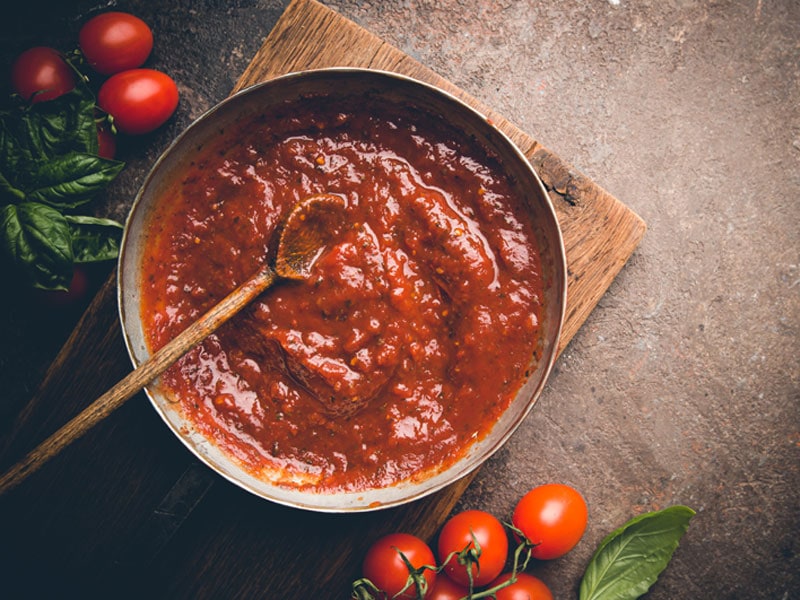
Using marinade in a sauce recipe is another way. Because both a marinade and a sauce often share some common ingredients, it is possible to create a new marinade-based sauce.
One of the most viable recipes for this case is tomato sauce. Its core ingredient is tomatoes which are acidic food. For this reason, existing acids in marinade could work very well in this recipe.
Other typical ingredients in tomato sauce, like onions, garlic, and oil, are also often included in many marinades. This means you can totally create your marinade-based sauce without much preparation.
However, keep in mind that if you reuse a marinade that has been in contact with raw meat or fish for this method, follow the simple rule: always cook it until it reaches over 165°F (74°C) for a few minutes.
Learn how to cook the perfect tomato sauce.
How To Identify A Spoiled Marinade Or Sauce
When it comes to determining if your marinade/ sauce has gone bad, there are 3 signs you would like to consider.
Expiration Date
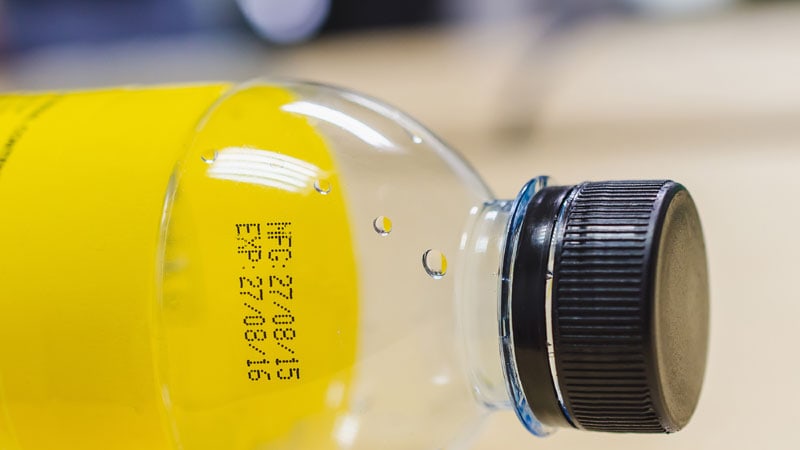
The expiration date should be the first thing you need to check. You can check it on the shoulder of the bottle. If your marinade/ sauce bottle has not been opened yet and is stored in a fridge, you can use it for some time after the expiration date. However, it may lose some original flavors.
Smell
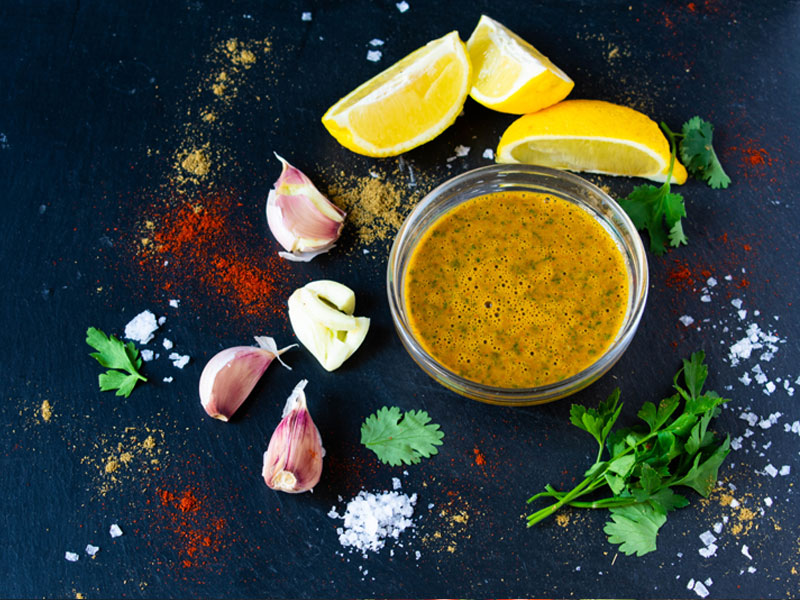
A bad smell is another way to tell whether your marinade or sauce is still usable. If it begins to smell like off-vinegar or spoiled cheese, it is not good to use anymore. In other cases, if you find the smell greatly different from the original state, it may be a sign as well.
Appearance
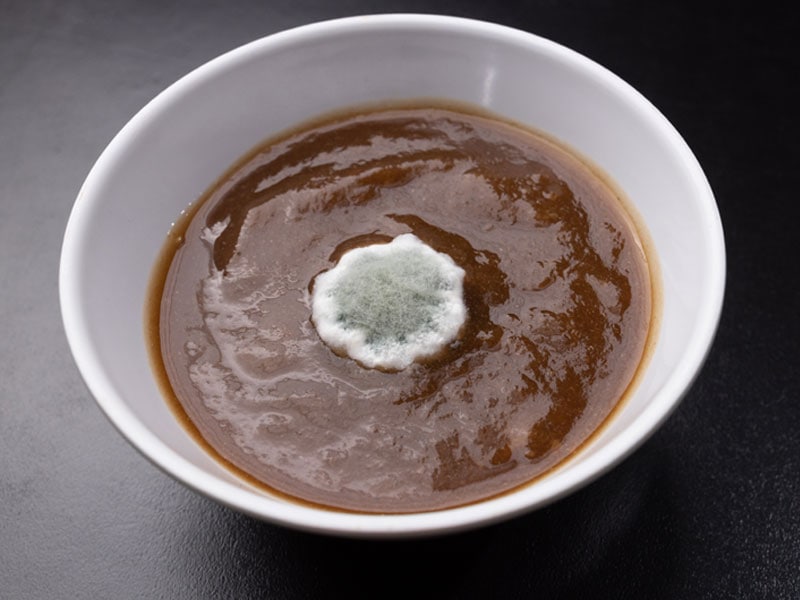
Molds are possibly the most obvious sign of spoiled marinade and sauce. It has a fur-like look with green, gray, or black colors. The change in the color of your liquid is also a sign of spoilage. If you spot any mold growing in your marinade or sauce, you should get rid of it.
FAQs
Here are other questions about marinade and sauce you may want to ask at the moment. They take just a few minutes to read. Stay tuned and give them a look.
Turn Your Leftover Marinade Into An Amazing Sauce!
Now, you got your answer. Yes, you can use your marinade as a sauce. Let’s get back to your children and let them know too. And how about practicing turning your marinade into a sauce? Demonstrate to your little ones and let them help you as well. That will be a fun family activity.
Next time, you will never waste a single drop of marinade again. If the article is helpful and interesting to you, leave your comments, and share it with your friends. They may find it informative as well.
References
- ASKUSDA.
- Kansas Department for Aging and Disability Services (KDADS) – Home.
- Cooking your food (no date) Food Standards Agency.
- Fruit and vegetable safety (2022) Centers for Disease Control and Prevention. Centers for Disease Control and Prevention.

